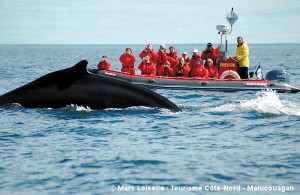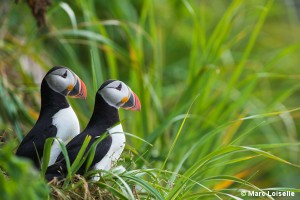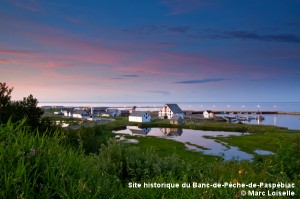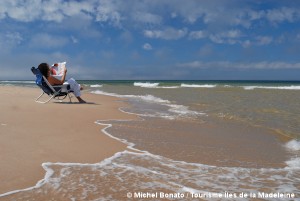The Québec maritime Blog

-
Sept-Îles
Optik360
The St. Lawrence: A River, a Sea, a Natural Attraction
The maritime regions of Québec are what they are because of the St. Lawrence. This majestic waterway has brimmed with life, inspired us and set the rhythm of our daily lives for as long as this land has been inhabited by humans. The multitude of coastal towns and villages in our regions bears witness to this fact.
What you first need to know about the St. Lawrence is that it is more than a river. It is first and foremost a gulf from which emerges the Îles de la Madeleine archipelago and which reaches as far inland as Pointe-des-Monts, in Côte-Nord. It then becomes an estuary until Lake Saint-Pierre, where it finally turns into one of the longest rivers in the world and one of the most important waterways in Canada.
In the maritime regions of Québec, people often refer to the St. Lawrence as “the sea.” In addition, the people who live along this waterway will tell you that the St. Lawrence is part of their identity and that they miss it when they move away.
In any case, the St. Lawrence has many facets worth exploring…
Navigating the St. Lawrence
The St. Lawrence provides many opportunities to admire our landscapes from a completely different and fascinating perspective. You can go all out and opt for a river cruise on the Bella Desgagnés to visit the coastal villages along the Lower North Shore. A novel way to explore the maritime regions of Québec and a great occasion to meet the people living there.
If you can’t make up your mind about which shore of the St. Lawrence to visit, take advantage of the many ferries that link the two shores and visit both! There are nine ferries in the maritime regions of Québec, which makes it easy to include multiple regions in your trip. Consult the St. Lawrence road trips to help you plan your itinerary. Don’t forget that you can also board the CTMA Traversier in Souris, Prince Edward Island, to get to the Îles de la Madeleine.
In addition, there are many islands in the St. Lawrence, which you can discover during sea excursions. Some areas, such as the Mingan Archipelago National Park Reserve, the Sept Îles Archipelago and the Îles de la Madeleine coasts, can even be explored by sea kayak.
Whales of the St. Lawrence
Did you know that the maritime regions of Québec are home to some of the best whale-watching sites in the world? After the spring migration, 13 species of whales are found in the waters of the St. Lawrence, including humpbacks, belugas and blue whales—the largest animals to have ever lived on earth. The species you can see vary from region to region.
 One of the most popular and best places to see whales is in the Saguenay–St. Lawrence Marine Park. Covering an area of 1245 km2 (480 sq. mi.), the Marine Park attracts a large concentration of marine mammals. This is because the interaction of the tides with the Laurentian Channel creates a rich feeding ground for these magnificent creatures.
One of the most popular and best places to see whales is in the Saguenay–St. Lawrence Marine Park. Covering an area of 1245 km2 (480 sq. mi.), the Marine Park attracts a large concentration of marine mammals. This is because the interaction of the tides with the Laurentian Channel creates a rich feeding ground for these magnificent creatures.
Whether by sightseeing boat, Zodiac or sea kayak, many whale-watching excursions are offered from a variety of departure points in our regions, including Tadoussac, Les Escoumins, Sept-Îles, Havre-Saint-Pierre, Rivière-du-Loup and Gaspé. The whale-watching season generally runs from May to September and sometimes even until October.
Wildlife of the St. Lawrence

Although the St. Lawrence is well known for its whales, which are a popular attraction, it is also home to many other animals, including seabirds. A visit to our regions will provide numerous opportunities to observe the large number of species found here. Keep your eyes peeled and you may spot great blue herons, piping plovers or northern gannets along the coast. Bird-watching sites are open to the public in various locations including Parc national de l'Île-Bonaventure-et-du-Rocher-Percé, Parc Nature de Pointe-aux-Outardes, the Mingan Archipelago, the islands of the St. Lawrence and the Fatima Barachois.
Our regions are also home to seals, another well-known marine mammal. Several species are found here, including grey and harbour seals, which can be seen from land in Parc national du Bic, in Bas-Saint-Laurent. Both species are also present in Gaspé Bay and the Percé area, in Gaspésie. In Côte-Nord, you can observe these seals alongside whales. Grey and harbour seals are also found in the Îles de la Madeleine, along with harp seals, which can be observed in the winter when they whelp their pups on the ice surrounding the archipelago. Don’t miss this opportunity to participate in a one-of-a-kind experience: a helicopter excursion to the ice to see the seal pups up close.
Several interpretation sites in the maritime regions of Québec have the mandate to educate the public about the St. Lawrence ecosystem, to increase awareness of its fragility and of the importance of its conservation. These sites include Exploramer, the Marine Environment Discovery Centre and the Marine Mammal Interpretation Centre (CIMM). As African environmentalist Baba Dioum wisely said, “In the end, we will conserve only what we love, we will love only what we understand, and we will understand only what we are taught.”
Heritage and the St. Lawrence
Gateway to the North American continent, the St. Lawrence has played an important role in the history of Québec and Canada since the arrival of the first European explorers. Today, many vestiges of this history can be found in our regions.
For starters, over 40 lighthouses stand guard along the St. Lawrence coastline. These red and white sentinels of the sea guided ships to safety for more than 100 years. Today, they are guardians of our heritage and introduce visitors to our maritime history through numerous interpretation activities.
 Cod fishing was a profitable industry during the 19th century in several of our regions. Learn about this history by visiting one of our interpretation sites, such as the Site historique national de Paspébiac or Manoir Le Boutillier.
Cod fishing was a profitable industry during the 19th century in several of our regions. Learn about this history by visiting one of our interpretation sites, such as the Site historique national de Paspébiac or Manoir Le Boutillier.
You can also soak up the quiet beauty of the historic Reford Gardens, on the banks of the St. Lawrence and Mitis rivers, in Gaspésie. Built on the grounds of Lord Mount Stephen’s 19th-century fishing camp, these magnificent gardens were created in the 1920s by his niece, Elsie Reford. You can admire the rare Himalayan blue poppy here.
Canada’s worst maritime disaster took place in the waters of the St. Lawrence in 1914 when the Empress of Ireland sank off Pointe-au-Père, killing 1012 people. Visit the Empress of Ireland Museum at the Pointe-au-Père Maritime Historic Site to learn more about this tragedy. Divers can explore the remains of the ship; however, diving is strictly regulated to preserve the wreck.
Experiencing the St. Lawrence!
 The St. Lawrence and its banks are also a natural attraction for visitors and residents alike. Come and enjoy the water at public beaches, go for a hike along the coast to admire the scenery and breathe in the fresh sea air or, if you’re more adventurous, try out kite surfing or other wind sports. In addition, be sure to participate in one of our many festivals where you can mingle with the local population. The St. Lawrence is an attraction all year round: in the winter, dozens of huts are set up along the banks for ice fishing. You can also cross the ice bridge to Île Verte (Green Island), which is otherwise only accessible by helicopter at this time of year.
The St. Lawrence and its banks are also a natural attraction for visitors and residents alike. Come and enjoy the water at public beaches, go for a hike along the coast to admire the scenery and breathe in the fresh sea air or, if you’re more adventurous, try out kite surfing or other wind sports. In addition, be sure to participate in one of our many festivals where you can mingle with the local population. The St. Lawrence is an attraction all year round: in the winter, dozens of huts are set up along the banks for ice fishing. You can also cross the ice bridge to Île Verte (Green Island), which is otherwise only accessible by helicopter at this time of year.
It’s no surprise that some of our most scenic roads follow the St. Lawrence. Admire magnificent views of our majestic river, estuary and gulf as you explore the Whale Route, the Bas-Saint-Laurent – Gaspésie Tour or the roads of the Îles de la Madeleine archipelago, and take the time to discover the coastal towns and villages that dot these roads. Don’t miss the opportunity to experience the many facets of the St. Lawrence and take home lasting memories of your trip to the maritime regions of Québec!
A few suggestions to help you plan your trip to our regions:
- Visit our home page
- Consult our road trip ideas
- Discover what to do and see in our regions
(1) comment
dinosaurriverexpeditions
Had a great time reading this article. Thanks for the info.